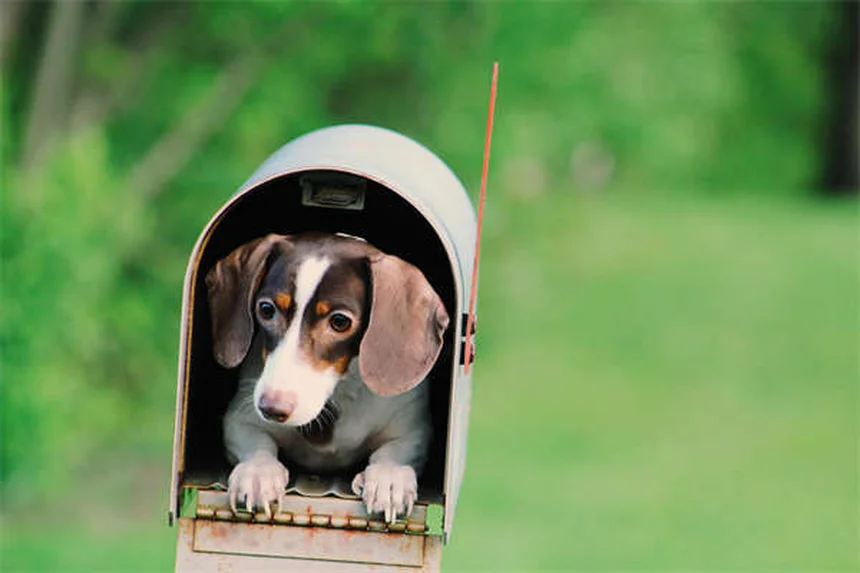Advertisement
Are you accidentally making your dog gain weight? The answer is: You might be! Many pet parents unknowingly pack on pounds with simple daily habits. I've been there too - that moment when you realize your pup's belly is dragging during belly rubs. Yikes! But don't worry, we'll fix this together!From guessing food portions to overdoing treats, these common mistakes can sneak up on any dog owner. The good news? Once you know what to look for, it's easy to make changes. In this guide, we'll walk through the top 5 weight gain culprits and how to avoid them - because every dog deserves to stay happy and healthy at their ideal weight!
E.g. :Dog Fever Symptoms: 5 Warning Signs Every Pet Owner Should Know
- 1、Oops! Are You Making These 5 Dog Weight Gain Mistakes?
- 2、The Sneaky Science Behind Dog Weight Gain
- 3、Beyond the Bowl: Environmental Factors
- 4、Weight Loss Wins: Success Stories
- 5、FAQs
Oops! Are You Making These 5 Dog Weight Gain Mistakes?
Hey there fellow dog lovers! Let's talk about those sneaky habits that might be packing extra pounds onto your pup without you even realizing it. I've been there too - that moment when you suddenly notice Fido's belly dragging on the floor during belly rubs. Yikes! But don't worry, we'll fix this together!
Mistake #1: Playing the Guessing Game With Food Portions
Here's a funny truth: Most pet parents measure dog food like they're making a wish at a fountain - just toss in whatever feels right! Dr. Judy Morgan, DVM, tells me she constantly sees shocked faces when she shows owners what one actual cup of kibble looks like.
Let me ask you this: Would you bake cookies without measuring ingredients? Of course not! Your dog's meals deserve the same precision. That old coffee mug you've been using? Time to retire it. Grab a proper measuring cup and check your dog food bag for portion guidelines based on your pup's ideal weight.
For those long workdays, consider these two options:
| Option | Pros | Cons |
|---|---|---|
| Portion Control Feeder | Precise timing & amounts | Higher initial cost |
| Measured Morning Portion | No equipment needed | Requires self-control |
Treat Troubles: The Hidden Calorie Bombs
Those innocent-looking training treats? They're like potato chips - you can't give just one! Dr. Shmalberg shares that treats often make up over 30% of a dog's daily calories. That's like you eating a whole pizza as "snacks" before dinner!
Try this instead: Use small pieces of their regular kibble as treats, or choose low-calorie options like:
- Carrot sticks (most dogs go crazy for these!)
- Green beans (the crunch factor is satisfying)
- Special diet treats (look for <10 calories each)
 Photos provided by pixabay
Photos provided by pixabay
Get Moving: Exercise Isn't Just for Humans
Remember when we used to say "walking the dog"? Nowadays it's more like "waddling the dog" for some pups! A daily 20-30 minute walk does wonders, but let's think outside the leash:
Why not turn exercise into playtime? Most dogs would choose chasing a ball over treadmill time any day! Try these fun activities:
- Backyard obstacle courses (use lawn chairs and boxes)
- Hide-and-seek with treats (mental + physical workout)
- Doggy playdates (social butterflies need friends too!)
Food Matters: Quality Over Quantity
Would you eat fast food every day and expect six-pack abs? Your dog's food quality matters just as much as portion size. Look for AAFCO-approved foods that match your dog's life stage. Here's what surprised me:
Some veterinary diets like Hills® Metabolic actually work with your dog's metabolism to help weight loss. It's like having a personal trainer in kibble form!
Table Scraps: The Silent Weight Saboteur
Those puppy eyes get us every time, don't they? But that bite of your burger could contain 10% of your dog's daily calories. Instead of sharing your meal, try these healthier alternatives when Fido begs:
- Frozen green beans (refreshing summer treat)
- Ice cubes (some dogs love chasing them)
- Special dog-safe "human food" like plain cooked chicken
 Photos provided by pixabay
Photos provided by pixabay
Get Moving: Exercise Isn't Just for Humans
Here's a trick I learned from my vet: Weigh your dog weekly using your bathroom scale. First weigh yourself, then weigh yourself holding your dog. The difference is your pup's weight. Keep a log - it's motivating to see progress!
Remember, every dog is different. What works for your neighbor's Labrador might not suit your Dachshund. When in doubt, your vet is your best ally in this weight loss journey. Now go give your pup some healthy love (maybe with an extra walk instead of an extra treat)!
The Sneaky Science Behind Dog Weight Gain
You know what's wild? Dogs have been evolving alongside humans for over 15,000 years, but their bodies still haven't caught up with our modern feeding habits. Talk about an evolutionary mismatch! While we're worrying about our pups' waistlines, let's dig into some fascinating science that explains why weight management is trickier than it seems.
Metabolism Mysteries: Why Some Dogs Gain Easily
Ever notice how some dogs can eat anything without gaining weight, while others seem to gain pounds just from sniffing food? It's not just in your head! Research shows that certain breeds have genetic mutations affecting their metabolism - Labrador Retrievers, for instance, often carry a gene that makes them feel constantly hungry.
Here's a surprising fact: Spayed/neutered dogs typically need 20-30% fewer calories than intact dogs. That's like cutting out an entire meal's worth of food each day! No wonder so many fixed pups pack on pounds without us realizing.
The Emotional Eating Connection
Wait - dogs emotionally eat too? You bet they do! Studies at universities like Emory have shown that dogs experience similar dopamine responses to food as humans do. That tail-wagging excitement when you grab the treat bag? That's their version of our "yay, ice cream!" reaction.
This explains why food-motivated dogs often develop weight issues. Their brains are literally wired to seek that delicious reward high. The solution? We need to find non-food ways to make them happy, like:
- Extra play sessions with favorite toys
- New sniffing adventures during walks
- Training sessions using praise instead of treats
Beyond the Bowl: Environmental Factors
Let's face it - we're all products of our environment, and dogs are no different. The spaces we create for our pups play a huge role in their weight management, often in ways we don't expect.
 Photos provided by pixabay
Photos provided by pixabay
Get Moving: Exercise Isn't Just for Humans
Modern dog life looks nothing like their ancestors' wild days. The average pet dog spends 80% of their day sleeping or resting - that's more than most house cats! Compare that to wild canids who might travel 30+ miles in a single day while hunting.
What can we do? Try these simple environmental tweaks:
| Problem Area | Simple Fix | Calorie Impact |
|---|---|---|
| Food bowl always accessible | Scheduled meal times | Reduces intake by 15-20% |
| All toys within reach | Rotate toys weekly | Increases activity by 30 min/day |
The Social Butterfly Dilemma
Here's something you might not have considered: Social dogs often gain more weight. Why? Because every visitor becomes a potential treat dispenser! My neighbor's Golden Retriever gained 5 pounds last holiday season just from well-meaning guests slipping him snacks.
The solution isn't isolation - it's education. Try putting a cute sign near your door saying "Please ask before treating me!" with a container of approved low-cal treats nearby. Most people will happily comply when they understand.
Weight Loss Wins: Success Stories
Enough about problems - let's talk solutions that actually work! I've collected some brilliant ideas from veterinarians and successful pet parents across the country.
The Slow Feeder Revolution
Did you know that how fast your dog eats can impact their weight? Dogs who wolf down their food tend to gain more because their brains don't have time to register fullness. Enter slow feeders - these genius bowls with mazes and ridges turn mealtime into a fun puzzle.
Here's why they're amazing:
- Extends 1-minute meals to 10-15 minutes
- Provides mental stimulation
- Reduces bloating and digestive issues
Hydration Hacks
This one blew my mind: Many dogs mistake thirst for hunger! Increasing water intake can reduce food consumption by up to 15%. Try these simple tricks to keep your pup hydrated:
- Add ice cubes to the water bowl (dogs love the novelty)
- Use a pet water fountain - the moving water encourages drinking
- Offer water-rich veggies like cucumber as snacks
The Power of Positive Tracking
Here's a question: Would you stick to a diet without seeing results? Probably not! The same goes for our dogs. Creating a simple weight loss chart with small rewards for milestones keeps everyone motivated. My friend Sarah made a "Pounds Lost = Extra Walk Time" chart for her Beagle, and the results were incredible!
Remember, healthy weight loss for dogs is about 1-3% of body weight per week. Any faster could be dangerous. Celebrate those small wins - they add up to big changes!
E.g. :5 Mistakes That Could Cause Weight Gain in Dogs and Cats | PetMD
FAQs
Q: How much should I actually feed my dog?
A: Here's the truth - most of us are feeding our dogs way more than we realize! Dr. Judy Morgan, DVM, says pet parents are often shocked when she shows them what one actual cup of kibble looks like. The solution? Ditch that old coffee mug and use a proper measuring cup. Check your dog food bag for portion guidelines based on your pup's ideal weight (not current weight!). If you're unsure, your vet can help calculate the perfect amount. Remember, even being off by just 10 extra kibbles daily can add up to significant weight gain over time!
Q: Are dog treats really that bad for weight management?
A: Those innocent-looking training treats are sneaky calorie bombs! Dr. Shmalberg shares that treats often make up over 30% of a dog's daily calories - that's like you eating a whole pizza as "snacks" before dinner! We recommend keeping treats under 10% of daily calories. Try using small pieces of their regular kibble as treats, or switch to low-cal options like carrot sticks or green beans. Pro tip: Break larger treats into tiny pieces - your dog will think they're getting more!
Q: How much exercise does my dog really need?
A: Great question! While every dog is different, most do well with 20-30 minutes of daily activity. But here's the catch - that waddle around the block might not be enough if your pup's already carrying extra weight. Think outside the leash! Try backyard obstacle courses, hide-and-seek with treats, or doggy playdates. Remember: Exercise should be fun for both of you. If your dog pants excessively or struggles, consult your vet before increasing activity.
Q: Does the type of dog food really matter for weight loss?
A: Absolutely! Would you eat fast food every day and expect six-pack abs? Quality matters as much as quantity. Look for AAFCO-approved foods matching your dog's life stage. For serious weight loss, veterinary diets like Hills® Metabolic can work wonders - they're like having a personal trainer in kibble form! These specially formulated foods help your dog feel full while getting fewer calories. Always transition foods gradually to avoid tummy troubles.
Q: Are table scraps really that harmful?
A: That bite of your burger could contain 10% of your dog's daily calories! Table scraps are the silent weight saboteurs - high in fat and calories, plus they can lead to begging behavior. Instead of sharing your meal, try healthier alternatives like frozen green beans or plain cooked chicken. Remember: Those puppy eyes are hard to resist, but saying no means saying "I love you" in the healthiest way possible!























